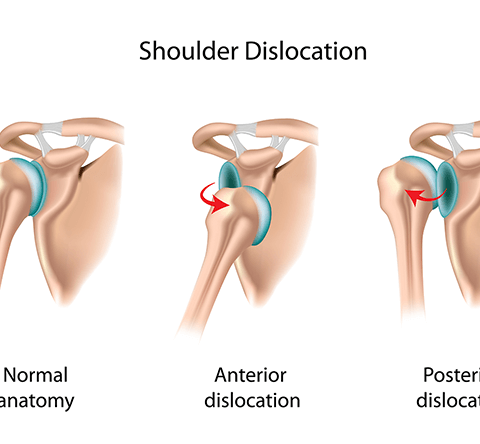
Shoulder Dislocation
Shoulder dislocation is a common Othopaedic injury where the upper arm bone (humerus) becomes displaced from the shoulder joint. This occurs when the ligaments, tendons, and muscles surrounding the joint are stretched or torn due to a traumatic event, such as a fall, sports injury, or motor vehicle accident. Shoulder dislocations can be partial or complete, with complete dislocations being more severe as the humerus completely separates from the socket.
Symptoms of a shoulder dislocation include intense pain, swelling, bruising, and an obvious deformity of the shoulder joint. In some cases, nerve or blood vessel damage may occur, leading to numbness, tingling, or weakness in the affected arm.
Symptoms of a shoulder dislocation include intense pain, swelling, bruising, and an obvious deformity of the shoulder joint. In some cases, nerve or blood vessel damage may occur, leading to numbness, tingling, or weakness in the affected arm.
Immediate medical attention is necessary for a shoulder dislocation. Treatment typically involves reducing the dislocation by manipulating the joint back into its proper position, a procedure known as closed reduction. This is often performed in a hospital emergency room under sedation or anesthesia to help relax the muscles and alleviate pain. Following reduction, the shoulder may be immobilized with a sling or brace to allow the surrounding tissues to heal.
After the initial treatment, rehabilitation exercises are essential to restore strength, flexibility, and range of motion to the shoulder joint. Physical therapy may be prescribed to aid in the recovery process and prevent future dislocations. In some cases, surgery may be recommended to repair severe ligament or tendon damage or to address recurrent dislocations.
It's important for individuals who have experienced a shoulder dislocation to follow their healthcare provider's recommendations for rehabilitation and to avoid activities that may put excessive strain on the shoulder joint. With proper treatment and rehabilitation, most people can regain full function of their shoulder and return to their normal activities within a few weeks to several months, depending on the severity of the injury. However, some individuals may be at increased risk of recurrent dislocations, especially if they have underlying joint laxity or participate in high-risk activities.




